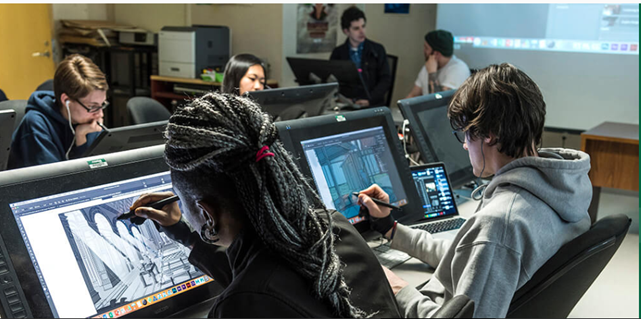Bring your drawing skills to life through acting and storytelling.
The three-year Animation Ontario College Advanced Diploma program provides you with the skills needed to meet the standards of the demanding international animation industry. As a student attending one of the best animation programs in Canada (as ranked by Animation Career Review, 2019) , you learn industry-standard technologies, drawing and animation skills.
This program focuses on acting and body mechanics and where you learn traditional, 3D, tradigital (using Toon Boom`s Harmony) and video game animation techniques. Our faculty members are industry professionals who have worked for studios such as:
- Disney
- Sony Image Works
- Mercury Filmworks
- Jam Filled Entertainment
- Atomic Cartoons
- Warner Bros. Animation
- Corus (Nelvana)
- Pip
- Kratts
- Ubisoft
Gain the ability to communicate your ideas through drawing, and to present them visually. Learn to see images in motion -a skill necessary for an animator, and ensure your animated creations are realistic and meet industry standards.
Focus is on layout, location and character design, gesture drawing and anatomy studies of the NUDE model, all culminating in performance-based character animation.
Careers
Graduates may find employment in the booming animation industry in local (Ottawa) studios, or Canadian animation centres like Toronto, Halifax, Montreal, Vancouver or with studios around the world. Animation grads are sought after, with a hiring rate in the +90% range with 100% employer satisfaction according to post graduate surveys. Third year students might also have the opportunity to work in a studio during part of the school year. There are also opportunities for advanced learning to earn a degree through our articulation partners.
